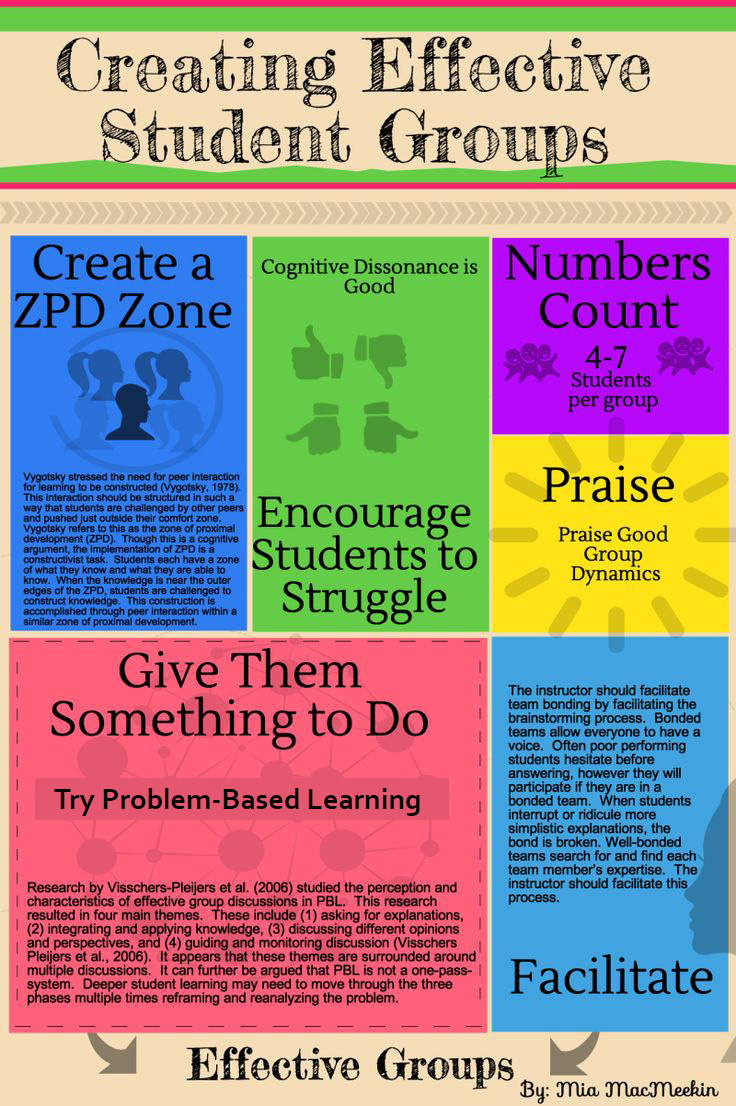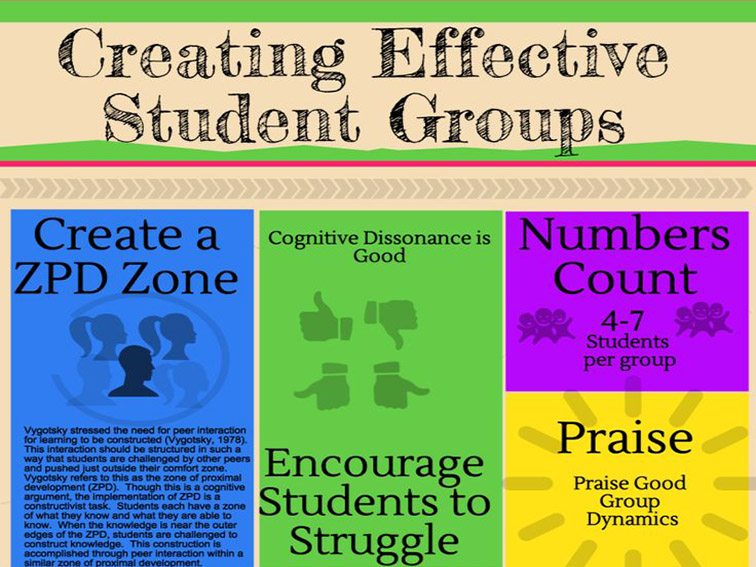6 Tips For Creating Effective Student Groups
by TeachThought Staff
Grouping students is easy; creating effective student groups is less so.
The following infographic from Mia MacMeekin seeks to provide some ideas to help make group work easier in your classroom. The strength of this particular graphic is in the range of the ideas. The first tip refers teachers to Vygotsky’s Zone of Proximal development, which frames student ability in terms of a range: what they can do unassisted, what they can do with the support of a More Knowledgeable Other (MKO), and what they cannot do even with support.
This is different for each student, and understanding these ranges for students can help inform grouping decisions, whether you’re using a peer instruction model, ability grouping, or another approach.
MackMeekin’s suggestion to consider problem-based learning in a group setting is especially useful in that it also provides a link to the design of curriculum and instruction as well, rather than merely being a grouping strategy. Students engaging in problem-based learning will themselves make unique demands on the curriculum rather than the other way around. That is, the curriculum will have to be adapted to fit the problem-based learning approach, as will the instruction and then, ultimately, the grouping itself.
This highlights the ecology of teaching and learning; changes here necessitate adaptations there.
6 Tips For Creating Effective Student Groups
1. Create a ‘ZPD zone’
2. Use cognitive dissonance
3. Quantity matters
4. Reinforce norms & praise
5. Sense of purpose
6. Don’t teach–facilitate

image attribution Mia Mackmeekin; This work by Mia MacMeekin is licensed under a Creative Commons Attribution-NonCommercial-NoDerivs 3.0 Unported License; 6 Tips For Creating Effective Student Groups
